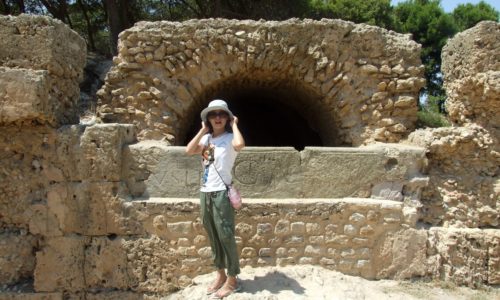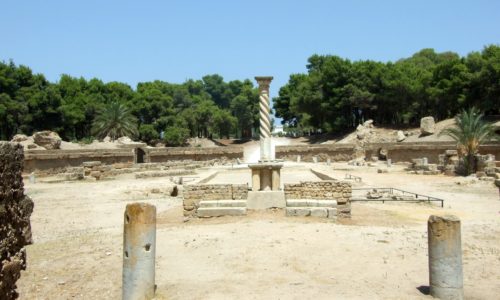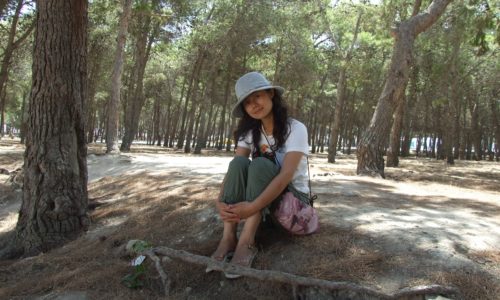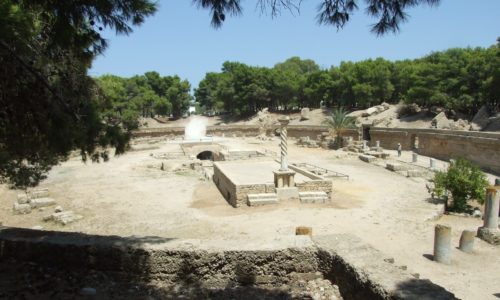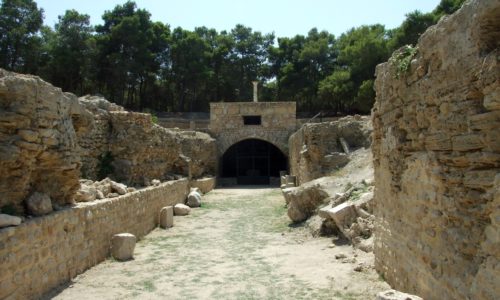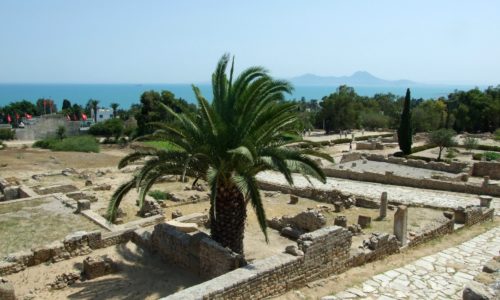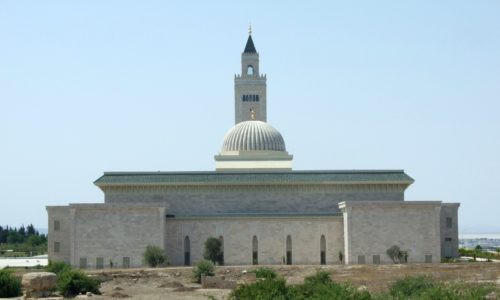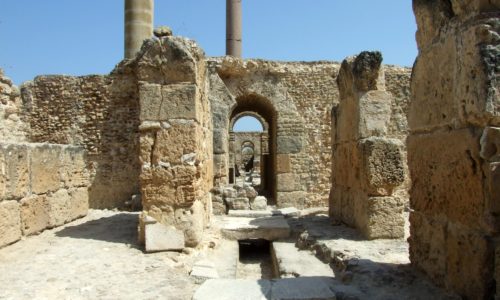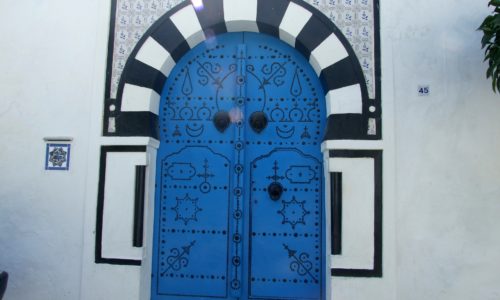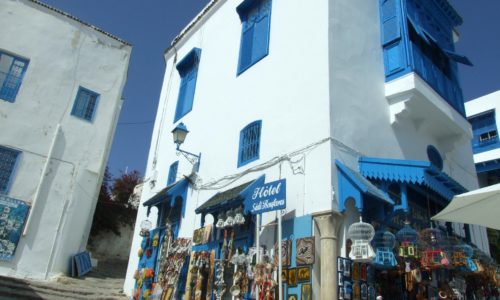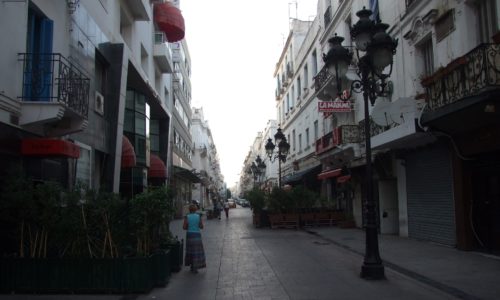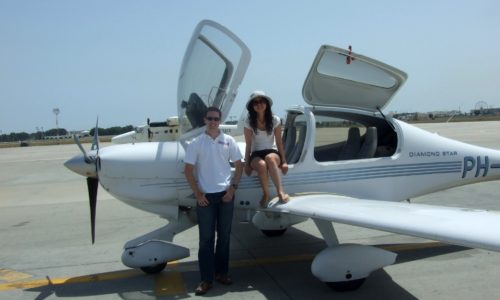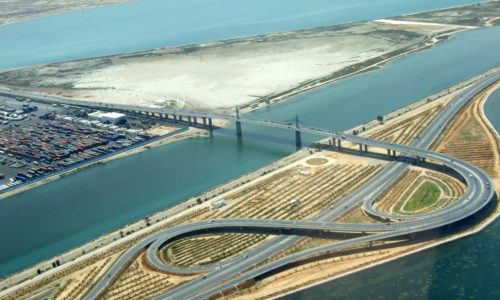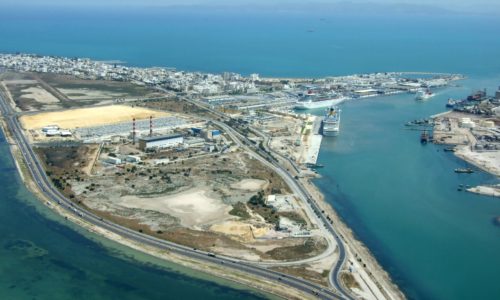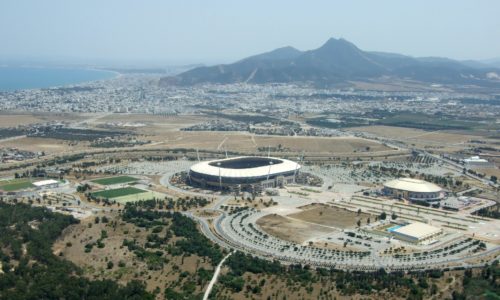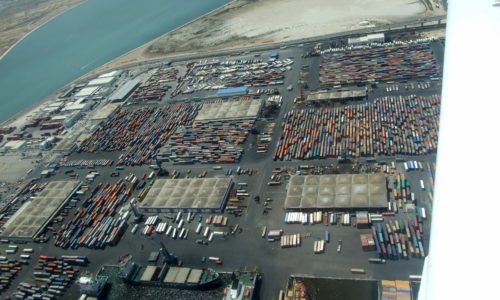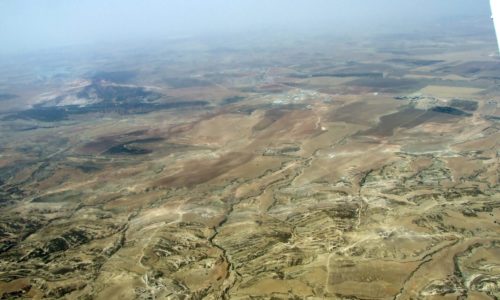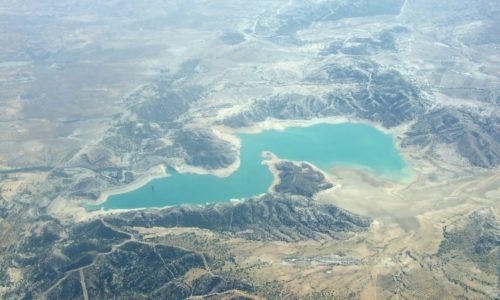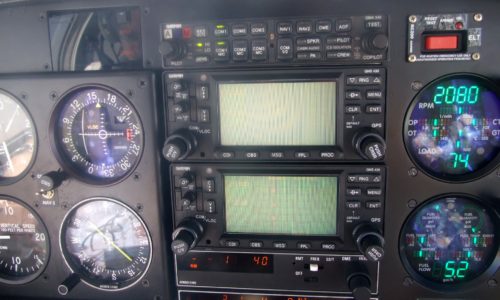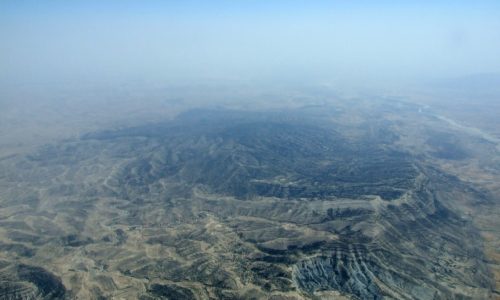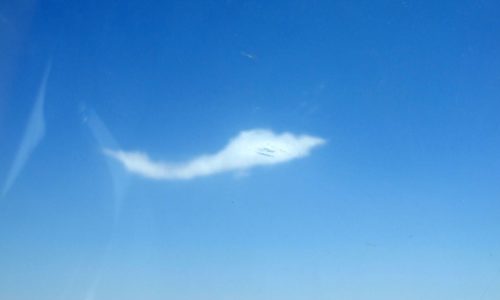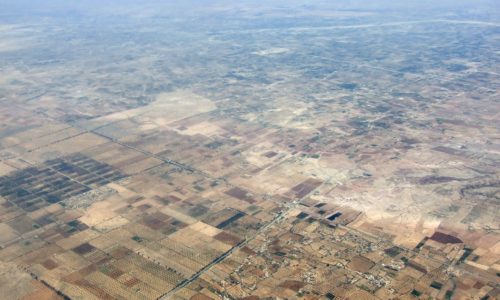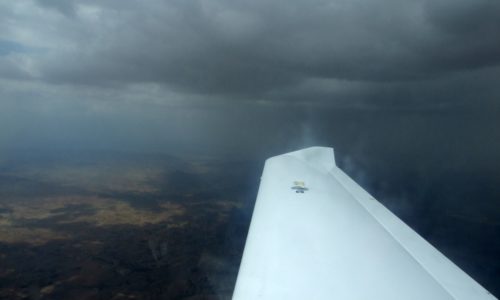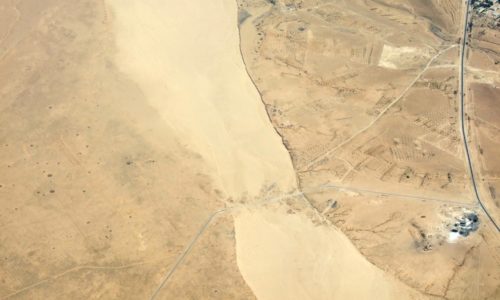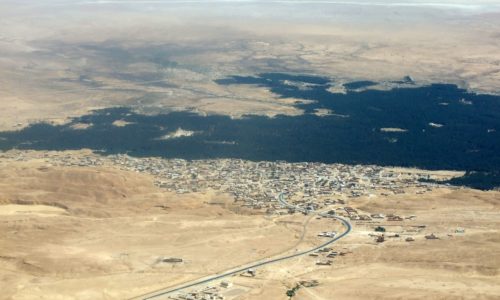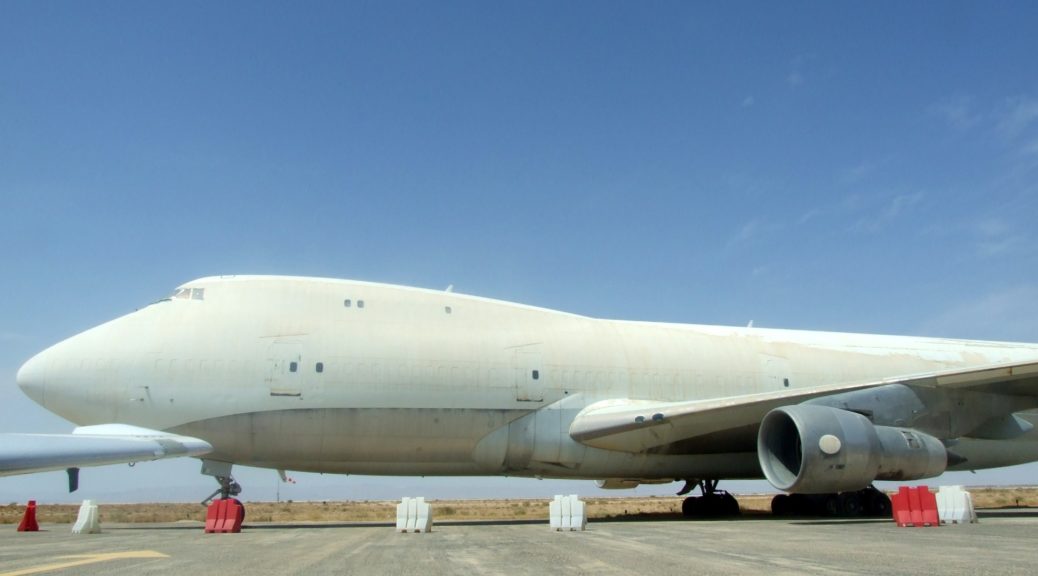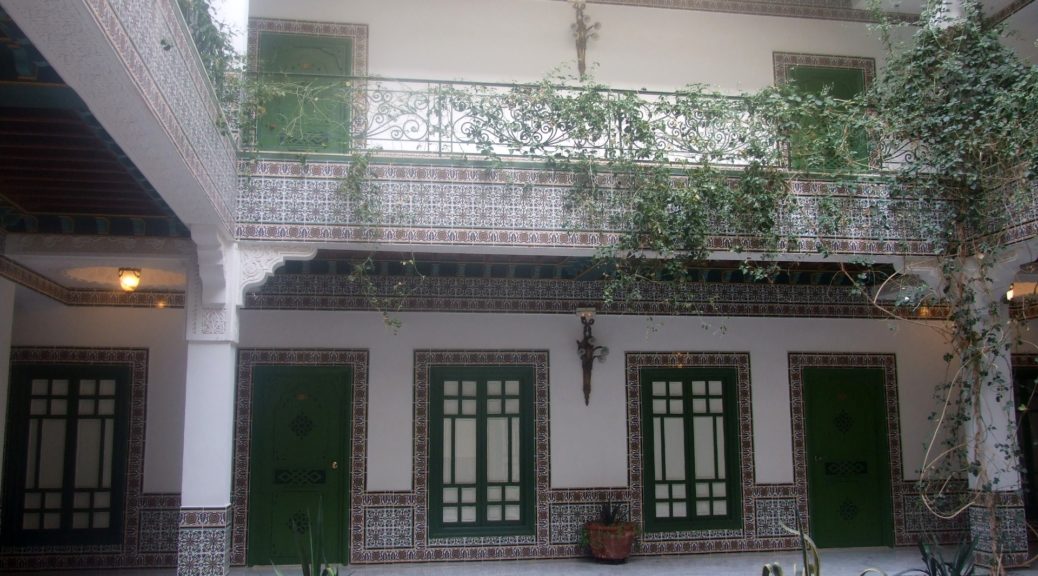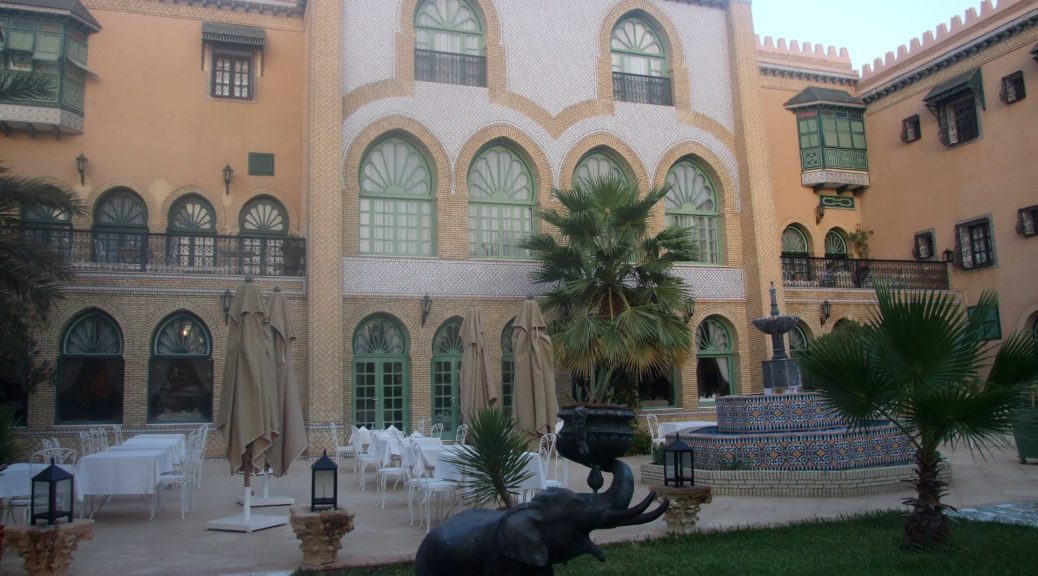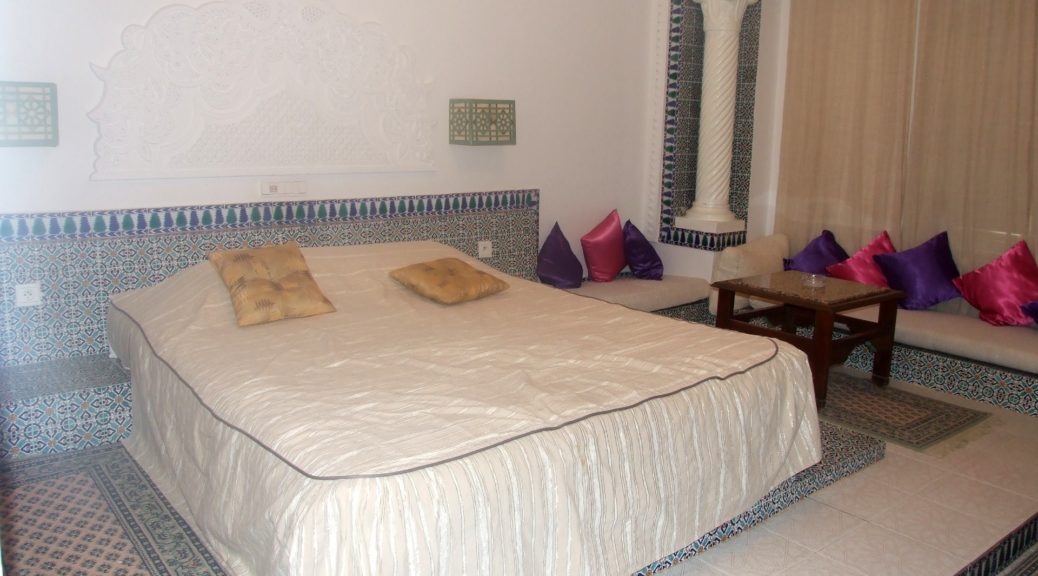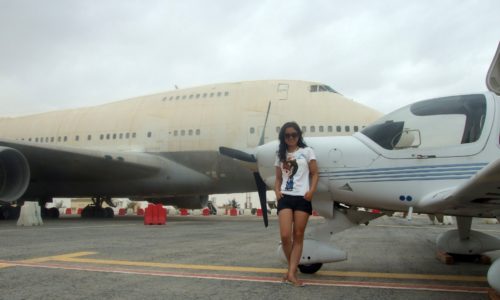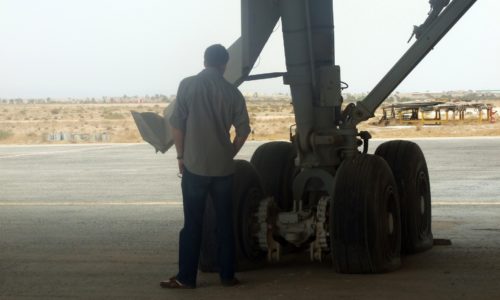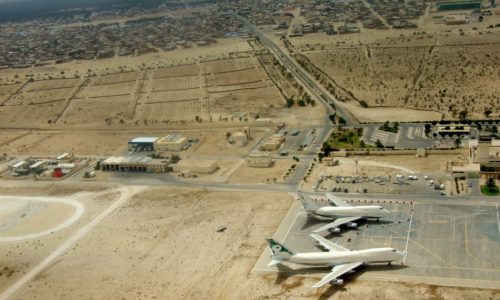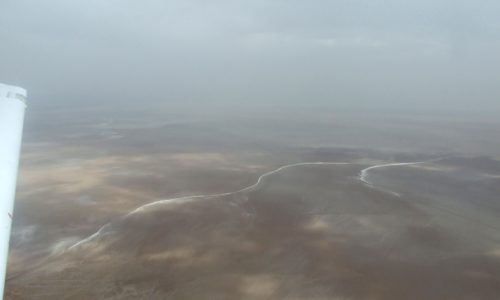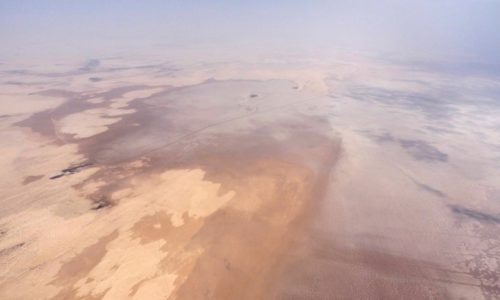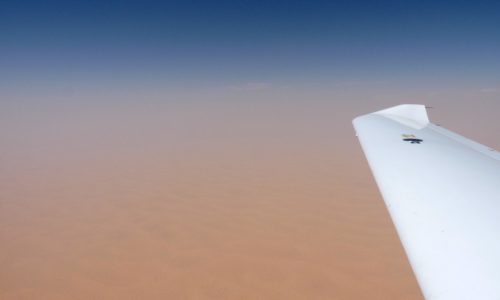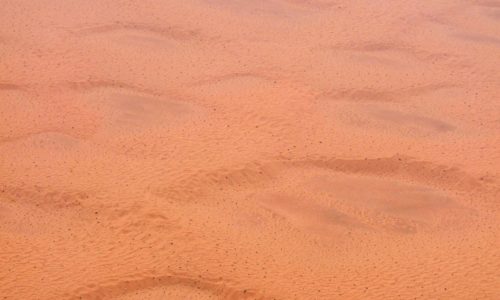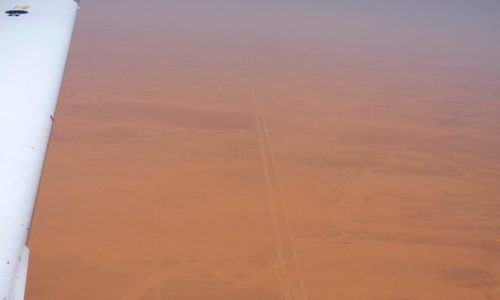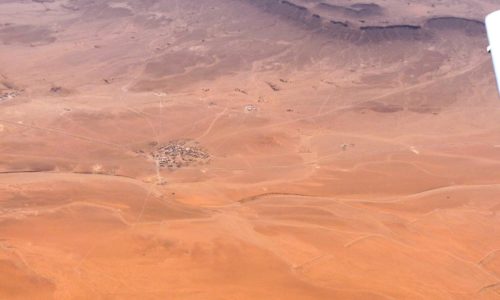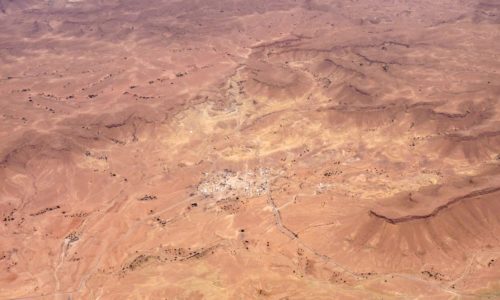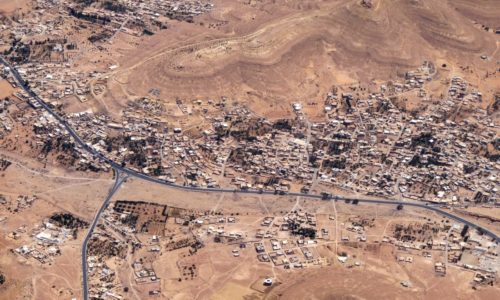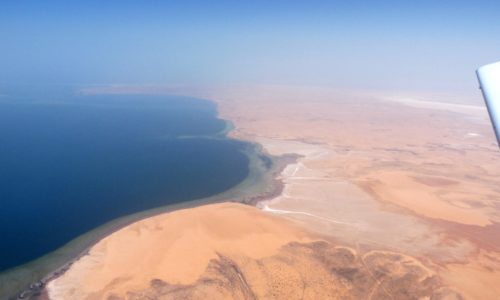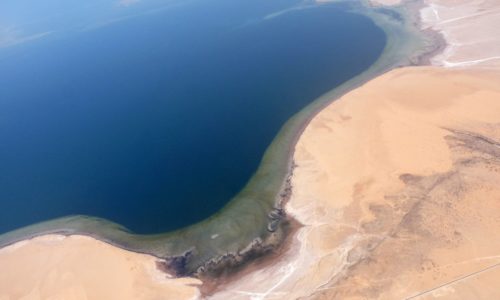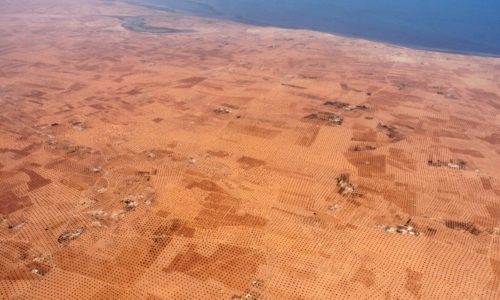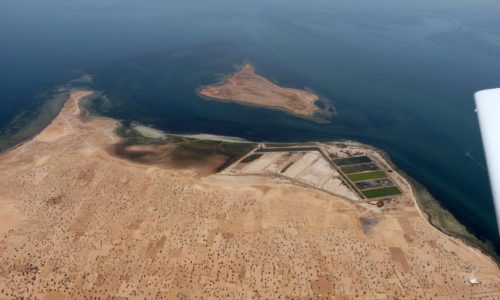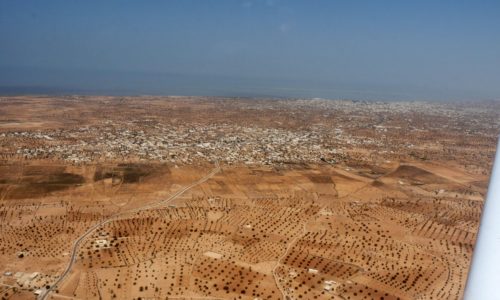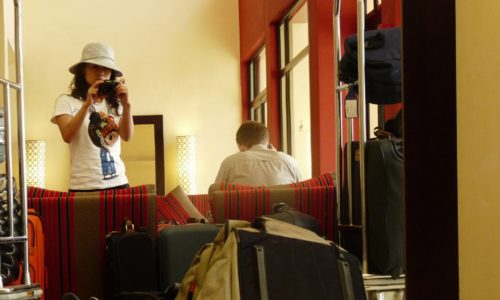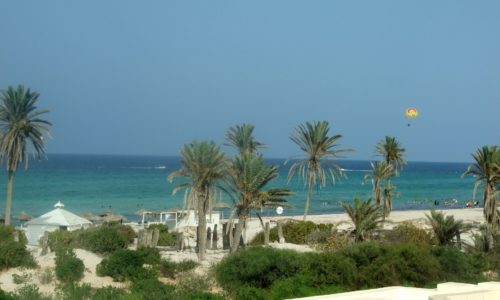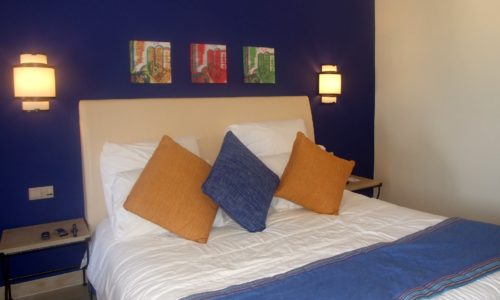Tunisia – Exploring Tunisia
On our “day off” in Tunis we had decided to visit the ruins of Carthage, and the well known seaside village of Sidi-Bou-Said. After breakfast on the balcony we secured the services of a local taxi driver for the day, at a very reasonable price, and set about visiting some of the better known locations around Carthage beginning with the Carthage museum. The museum itself was fairly small, mainly full of carved statues and pottery from the time of Carthage. Just as impressive as the museum was the view over the harbour with enormous cruise ships moored in the distance. From the museum, we were taken first to a small but well preserved amphitheater, and then on to a larger restored amphitheater which was now in use for modern events; at the time we visited, a weeks-long music festival was under way.
Our next destination was an old Roman villa which was situated nearby on a hill overlooking the coast. Most of the villa was in ruins, but some areas were well preserved or restored, and visitors were free to roam the grounds and building at will to look around. We spent an hour or so exploring, but by now we were under the mid-day sun and it was time to get somewhere a bit cooler such as the gardens around the old baths down near the harbour. The gardens were cooler, although still not exactly cool in the August weather, and the ruins of the old baths extremely impressive; several of the large columns had been restored to give an idea of the original scale.
In the afternoon we made our way to the coastal tourist village of Sidi-Bou-Said. This ancient city is a popular destination for visitors and famous for its blue and white colours, steep hillside paths, and bustling market street. To be honest, it is so tourist oriented that it has become rather tacky and while we enjoyed the architecture, it wasn’t long before we’d had enough of the crowds and constant harassment by salesmen and returned to the taxi to take us back to the hotel.
We rested for the remainder of the afternoon before heading into Tunis city centre to find dinner. The city turned out to be remarkably quiet; it turns out it was Ramadan, something that we knew, but the ramifications of which had escaped us. In the event, not a single restaurant was open so we simply toured the city a little. A remarkable number of stray cats were in attendance, and amongst other interesting sights we found the headquarters of Shell in Tunisia. Having exhausted the delights of deserted downtown Tunis we returned to the hotel and enjoyed the traditional Tunisian meal that was being served to celebrate Ramadan. Tunisians seem to like tuna a lot…perhaps it’s in the name?
The next day’s flight would take us southwest towards the city of Tozeur. Tozeur is located well into the desert and is most famous for its date palm plantations. Late the previous night, when checking the NOTAMs (Notices to Airmen) we had noticed one that reported Tozeur airport as being closed the day of our arrival. This was concerning, and we had immediately checked with our handling agent who confirmed the NOTAM but reported that he had arranged for the airport to be open specifically to receive us! We just had to pay the fee. This last part made me a little nervous, until we were informed that the fee to open the entire international airport for us would be 80 Euro-cents.
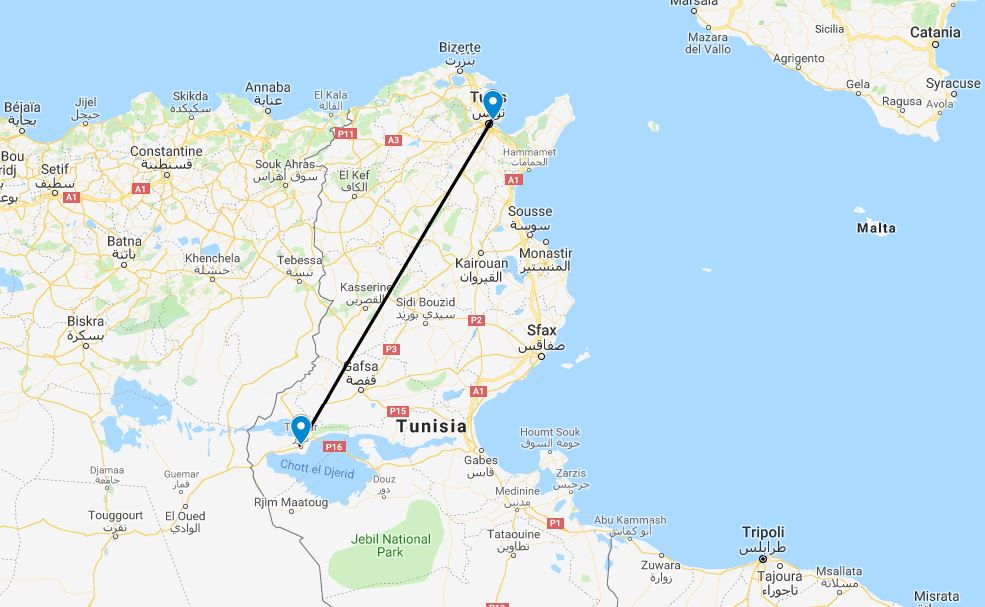
FAST took us quickly through the formalities at Tunis airport and we were soon on our way towards Tozeur, following the IFR airways and climbing quickly up to 10,000ft where the air was cooler. The climb-out took us over the port, where plenty of new development was in evidence, and then over a huge new stadium and conference centre. It wasn’t long before we were out over the desert, although there was still a surprisingly high level of vegetation. The Garmin 430 GPS units did not like the heat; the screens distorted and became illegible with washed out colours and strange bands across the display, but once the temperature cooled a little things improved and we could navigate with them again. A lot of dry riverbeds and small villages could be seen as we went, and we even passed some rain falling from high clouds and evaporating before making it to the ground.
We began a descent into Tozeur and before long could see the huge expanses of date palm plantations near the city. It was not immediately obvious how they were irrigated out here in the desert. ATC cleared us to land, and as we approached we saw two decrepit 747s parked up outside the terminal. We taxied in and were directed to our parking spot; right in front of both of the two jumbo-jets. They were marked up in Iraqi Airways colours and it turns out that they had been flown to Tozeur before the first Gulf War to keep them out of harms way. In the end, they were never returned and had been sitting rotting at Tozeur for 20 years.
The temperature on the ground was over 40 degrees, so we were happy to be quickly collected and taken through the terminal. The airport staff called a taxi for us which took us to our hotel, built and decorated in traditional Tunisian style. The rooms were set around small courtyards, and on the bottom floor where we were had doors opening directly into the gardens which were full of statues of African animals. Not having learnt from our Tunis experience, we set off to walk into town and find dinner, but were midly more successful on this occasion finding a small café billing itself as a “Tourist Restaurant”. Juan enjoyed the camel steak, although it tasted suspiciously like beef…
That evening we received a phone call from the handling agents. Our planned mid-day stop for the next day, El-Borma, was closed. This time they could not arrange an opening for us, as they were tearing up and resurfacing the runway, so we changed our plan to be a simple loop down into the desert and back up to the coast for that night’s stop at the island of Djerba.
We arrived back at Tozeur airport, which was open as usual on this occasion, and Juan waited with the security staff at the gate while I went upstairs to pay our 80 cent fee, collect the weather briefing, and file the flight plan. Juan passed the time downstairs translating the Chinese characters on the x-ray machine for the security staff, who were pleased to find out what they meant at last. We walked back out to the aircraft, taking some photos of the Diamond with the 747s as we went, and pre-flighted thoroughly before a long taxi to the other end of the runway and an easterly take-off over the date plantations. We turned south and headed out into the desert; the water shown on the map is deceptive, and is in fact a dry lake!
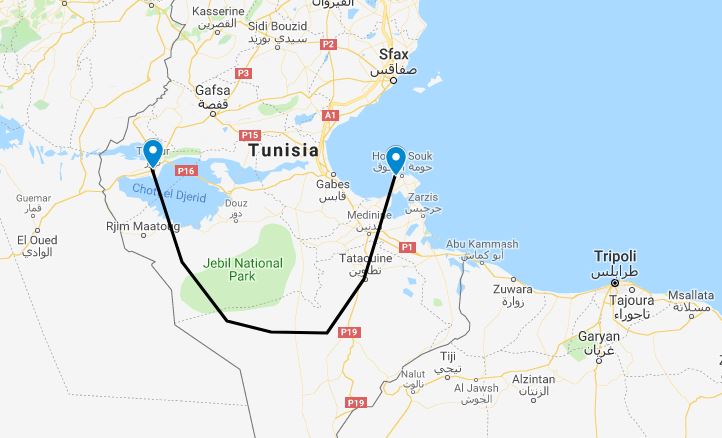
This time we were flying over real desert; none of the vegetation or settlements of the day before. Just bare rock and sand dunes with the occasional dry riverbed to break the monotony. After 40 minutes or so we turned and began our track east across the desert, passing only a solitary oil pipeline as we went. We flew overhead an old dirt runway that had been used to service a pumping station on the pipeline, but was now out of use; despite still being listed as active in the Tunisian AIP, a phone call to the authorities had confirmed that it was not possible to land. We flew over without stopping, then, marveling at what a lonely life it must be to work there, and before long we were turning north and starting to see signs of civilization once again.
As we neared the coast, the agriculture and human habitation below became more and more prevalent. Soon we could see the straights between the mainland and the island of Djerba appearing, and as we continued our descent the outside temperature quickly rose into the 30s. We were asked to orbit over the southern edge of the island for a few minutes while jet traffic landed at Djerba ahead of us, and were then directed in for final approach over the palm trees and little houses. We were directed past the terminal to the GA parking and met by handlers in a pick-up, who helped us load our bags on board. As I was closing the rear canopy, there was a loud crack; the rear hinge had snapped clean through!
This was a problem; without the hinge intact, the powerful piston that holds the canopy open would not allow it to close at all. With some tools borrowed from the handling agent, I disconnected the piston, which allowed us to close the canopy so that it was secured by the front hinge, and the locking pins at front and rear at the bottom of the canopy. Once closed, we left the canopy secured for the rest of the trip in order to avoid putting any further stress on the front hinge. The tower gave me permission to do a high speed run down the runway to ensure that the door did not flex at all when under way; all seemed good so we parked up and took a taxi to our hotel.
Despite arriving after check-in time we waited for half an hour in the lobby for our room to be prepared, finally getting fed up and going off to have a late lunch in the hotel restaurant while we waited. When we finally made it to the room it was at least comfortable with a passable view of the beach! The afternoon was spent relaxing and flight planning for the next day; I was starting to think I may have bitten off more than I could chew. The plan was to fly all the way from the south of Tunisia, stop for fuel after 4 hours in Northern Sardinia, and then continue another 3-4 hours to Northern France for a night stop. Not impossible, and I have since flown for similar amounts of time in a single day, but challenging nonetheless and with little room in the schedule for delays.
We returned to the same restaurant for dinner, stopping along the way to sweet-talk the receptionist into printing out some airport diagrams for me. An after-dinner walk on the beach, and some room-service chocolate pudding, and we turned in ready for our marathon flight the following day.
Click here to read the final part of the story.






